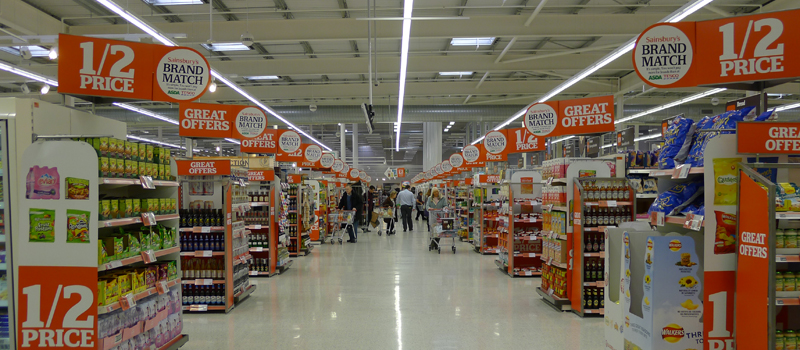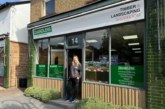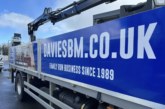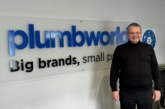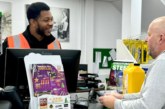
CSD Associates’ Ashley Evans draws parallels with supermarket merchandising to emphasise the considered use of ‘Hot Spots’ as a way to generate increased sales.
I have an old friend who was very successful in the finance industry and was lucky enough to go into semi-retirement as a relatively young man. This coincided with his wife’s career taking off again after staying at home to bring up the kids. So, being a ‘modern man’, he also became a bit of a ‘house husband’ enjoying a bit of cooking and agreeing to do the weekly supermarket shop.
His highly organised wife eased the pain of this by putting together a simple spreadsheet which listed the local Sainsbury’s stock layout in sequence. On a Thursday evening she ‘ticks the relevant boxes’ and my mate then uses this like a paper ‘Sat Nav’ to guide him round the store, in sequence, on the Friday — usually meeting me at our local ‘for a swift one’ on the way home’.
One Friday he didn’t turn up. The following week I found out why — apparently he’d set off with his Sat Nav-list but couldn’t find anything. They had done some re-merchandising and it took him almost three hours to do the shopping, so he was not a happy bunny!
His wife was even more annoyed because she would have to re-jig her whole spread sheet. She rang the store and gave the manager a serious dressing down for spoiling her system!
The purpose of this rambling preamble is to focus on a frequently discussed question in merchandising — namely, “to change or not to change” and the part that ‘Hot Spots’ play in effective merchandising.
The argument for moving things around in a self selection areas centres on the adage that “familiarity breeds contempt”, particularly where customers are regular visitors as they are in supermarkets. Trade Collection customers are similar and get used to where everything is. So, if you regularly move things around you run the risk of seriously upsetting valuable customers and increasing your CTS3 as they need help to find things and / or let you know what a pain in the butt it is.
The argument for doing so is that you overcome the BLE2 where customers just go straight to the products they need, missing other product ranges and reducing their DOBS3.
Something to be said for both approaches as, on the one hand, moving things around can help remind customers about the rest of your range but on the other it can have the negative effect described above.
So what to do?
Change is good, but you should not do it too frequently; it should be done in such a way that minimises time and effort in relation to you staff, as well as minimising the potential to upset to your regular customers. This ‘tightrope’ approach can be achieved through effective creation and use of ‘Hot Spots’, so-called because they tend to turn over 2-3 times the average per square foot. They do this because:
- They are in an area of high traffic flow;
- They tend to face the natural traffic flow;
- The displays on them benefit from the ‘Isolation Factor’;
- Traffic flow past them tends to be slower, increasing awareness.
Then the “winners or losers argument” comes into play. ‘Winners’ are the 20% of lines that tend to generate 80% of your sales whereas ‘losers’ do the reverse. It is tempting to put losers on Hot Spots to jack up their sales, but you get a much better return from the winners.
Most commonly, these benefits accrue from displays on a GEU4. But, too often they are misused:
- Where there is a proper GEU4 but the merchandise layout is allowed to ‘run round’ the gondola and not leave the end free as a ‘Hot Spot’, OR…
- No proper shelving has been specified so manufacturer’s Point-of-Sale stands tend to get plonked there. These units are often too high, stick out like a sore thumb and one has to ask whether the whole range are ‘winners’.
- If there is no shelving, can construct a proper promotional plinth which is better than directly on the floor. Proper plinths look more professional, and introduce an element of control over where the stock is located, particularly if they overlay / extend the base shelf of a bay of gondola.
Things to remember in relation to Hot Spots:
- Take a look at your self-selection area and check the use of GEUs4, in relation to the notes above, then look to designate some of them as Hot Spots;
- The best ones to start with are those which face the entrance and / or those facing the Trade Counter;
- Remember that more impact is generated by sticking to just putting one or two products in volume on your Hot Spot — whole ranges can confuse and reduce impact;
- Make sure you have effective signage and ticketing to draw people’s attention to the display, inform them and tell them what a good price is being offered;
- Use MLM5 to generate extra sales by featuring products that are normally merchandised elsewhere, making sure to leave some in their normal location;
- Use them to promote seasonal winners and launch new products.
And, going back to the beginning of this story, they key is to consider the need for change without massive amounts of work for the staff or upsetting your customers. The regular up-dating of Hot Spots plinths and GEUs4 gives the impression of change and that there is always something new and interesting without all the downsides.
The CSD Project CD or DropBox link has more information on the projects referred to in these articles.
Jargon Buster
1 = Cost To Sell
2 = Bee Line Effect
3 = Danger Of Being Sold
4 = Gondola End Unit
5 = Multi Location Merchandising

